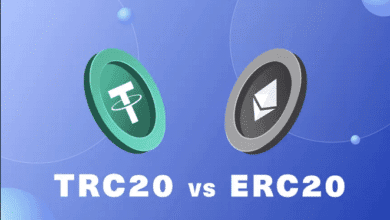When Was Blockchain Invented?

Blockchain technology, which has become the backbone of many digital currencies and applications, has gained significant attention in recent years. However, its origins date back to the early 1990s, with its most famous application being Bitcoin. In this article, we explore the history of blockchain, from its early conceptual stages to its eventual mainstream adoption. when was blockchain invented.
Introduction: Understanding Blockchain
Blockchain is often associated with cryptocurrencies like Bitcoin and Ethereum, but its uses extend far beyond digital money. At its core, blockchain is a decentralized and distributed digital ledger that securely records transactions across a network of computers.
The technology promises greater transparency, security, and efficiency in various industries, including finance, healthcare, supply chain management, and more. But before we dive into the wide-reaching applications of blockchain, let’s first examine its origin story.
The Early Concepts of Blockchain (Pre-2008)
Before blockchain became a mainstream technology, its foundational ideas were already in the works. Key concepts that would later define blockchain technology emerged as early as the 1970s and 1980s. when was blockchain invented.
Cryptography and Public Key Infrastructure
One of the earliest components of blockchain technology was cryptography, which enables secure communications. In the 1970s, Whitfield Diffie and Martin Hellman developed public key cryptography, a technique that allowed secure digital transactions over unsecured networks. This innovation was fundamental to the eventual development of blockchain’s security mechanisms.
The Birth of Digital Signatures (1980s)
In the 1980s, another milestone in cryptography occurred with the invention of digital signatures by researchers such as Ronald Rivest, Adi Shamir, and Leonard Adleman. These signatures allow individuals to sign digital data, verifying their identity and preventing tampering—key components for creating tamper-proof blockchain records.
The Concept of Distributed Databases (1990s)
In the early 1990s, computer scientists began developing the idea of distributed databases, where multiple copies of a database were stored across different nodes in a network. This idea of decentralization would become a cornerstone of blockchain technology.
One of the first uses of distributed databases was in Peer-to-Peer (P2P) networks, which allowed people to share files directly without relying on a central server. These concepts would lay the foundation for future blockchain networks.
The Invention of Blockchain (2008-2009)
Bitcoin Whitepaper: A Revolutionary Proposal
The most significant moment in the history of blockchain came in 2008 with the publication of the Bitcoin whitepaper by the mysterious figure known as Satoshi Nakamoto. Nakamoto’s vision was to create a decentralized digital currency that would enable peer-to-peer transactions without a need for a trusted third party like a bank or government.
Nakamoto’s proposal relied on a public ledger—a distributed database to record transactions securely across a network of computers. The core idea was to make these transactions immutable (unchangeable) and transparent.
The Bitcoin blockchain, created by Nakamoto in 2009, was the first practical implementation of blockchain technology. It solved key problems such as double-spending (the risk that a digital currency could be copied and spent multiple times) through a consensus algorithm called Proof of Work (PoW).
Blockchain as a Public Ledger
Nakamoto’s blockchain served as a public ledger of all Bitcoin transactions. It was transparent, immutable, and decentralized, meaning no single party could alter the ledger without the consensus of the network. This innovation marked the beginning of a new era for blockchain technology.
The Evolution of Blockchain Technology
The First Block: The Genesis Block
On January 3, 2009, Satoshi Nakamoto mined the first block of the Bitcoin blockchain, known as the Genesis Block. This block contained a hidden message in the coinbase (the reward transaction for mining the block): when was blockchain invented.
“The Times 03/Jan/2009 Chancellor on brink of second bailout for banks.”
This message was a subtle critique of the traditional banking system and a statement of purpose for Bitcoin’s creation—an alternative to centralized financial institutions.
The Launch of Bitcoin and Blockchain Adoption
The Bitcoin network became active in 2009, allowing users to send and receive Bitcoin using the new blockchain technology. Initially, Bitcoin was used mostly by cryptography enthusiasts and early adopters, but over time, the network grew and attracted more users.
By 2010, the first real-world transaction using Bitcoin took place when a programmer named Laszlo Hanyecz paid 10,000 BTC for two pizzas. This transaction highlighted the potential of blockchain to facilitate secure, peer-to-peer transactions without intermediaries.
Blockchain Expands Beyond Bitcoin
Ethereum: The Rise of Smart Contracts
In 2015, a revolutionary advancement to blockchain technology came with the launch of Ethereum. Founded by Vitalik Buterin, Ethereum introduced the concept of smart contracts—self-executing contracts with the terms of the agreement directly written into code.
Ethereum’s blockchain was designed to be more flexible than Bitcoin’s. It allowed developers to create decentralized applications (DApps) using its blockchain, which expanded the use cases of blockchain technology far beyond cryptocurrencies.
Other Blockchain Projects and Innovations
Since the launch of Bitcoin and Ethereum, many other blockchain projects have emerged. Some of the most notable include:
- Ripple (XRP): Focuses on cross-border payments and remittances.
- Litecoin: A Bitcoin alternative that offers faster transaction times.
- Polkadot: A platform designed to enable interoperability between different blockchains.
The Modern Era of Blockchain (2017-Present)
The Rise of Blockchain in Various Industries
Since 2017, blockchain technology has gained significant traction in a variety of industries, including:
- Finance: Banks and financial institutions are using blockchain for faster, cheaper, and more secure cross-border transactions.
- Supply Chain: Companies are leveraging blockchain to ensure transparency and traceability in their supply chains.
- Healthcare: Blockchain offers solutions for securely storing patient records and improving the healthcare supply chain.
- Government: Some governments are experimenting with blockchain for voting systems, identity verification, and land registries.
The Development of Blockchain Consensus Mechanisms
New consensus mechanisms have emerged to address the limitations of traditional Proof of Work, which is energy-intensive. Some notable alternatives include:
- Proof of Stake (PoS): Used by Ethereum 2.0, PoS reduces the environmental impact of blockchain networks by allowing users to validate transactions based on the amount of cryptocurrency they hold.
- Delegated Proof of Stake (DPoS): A faster consensus mechanism that allows token holders to vote for delegates who will validate transactions.
- Proof of Authority (PoA): Used by private blockchains, PoA relies on trusted validators to confirm transactions.
Blockchain’s Role in Web 3.0
Blockchain is a key component of Web 3.0, the decentralized internet. Web 3.0 envisions a more open, user-controlled internet, where blockchain will power decentralized applications (dApps), decentralized finance (DeFi), and non-fungible tokens (NFTs).
Blockchain Timeline: Key Milestones
| Year | Milestone |
|---|---|
| 1976 | Whitfield Diffie and Martin Hellman develop public key cryptography |
| 1983 | Digital signatures are introduced |
| 1991 | Stuart Haber and W. Scott Stornetta propose a secure chain of digital signatures |
| 2008 | Satoshi Nakamoto publishes the Bitcoin whitepaper |
| 2009 | First Bitcoin transaction occurs on the Bitcoin blockchain |
| 2015 | Ethereum introduces smart contracts and decentralized applications |
| 2020 | Ethereum 2.0 launches, moving from Proof of Work to Proof of Stake |
| 2021 | Blockchain adoption grows across various industries |
| 2024 | Continued advancements in scalability, security, and interoperability |
Conclusion: The Future of Blockchain
Blockchain technology has come a long way since its inception in 2008. From a revolutionary idea for a decentralized currency to a powerful tool for secure and transparent data management, blockchain’s potential is vast and still largely untapped.
The future of blockchain technology is bright, with ongoing innovations in scalability, security, and governance. As more industries explore its capabilities, we can expect blockchain to play an even more significant role in the years to come.
Frequently Asked Questions (FAQ)
Q1: Who invented blockchain?
A1: Blockchain was invented by an anonymous individual or group of individuals using the pseudonym Satoshi Nakamoto. The first application of blockchain was in the creation of Bitcoin.
Q2: What is the first blockchain?
A2: The first blockchain was the Bitcoin blockchain, which was created in 2009.





